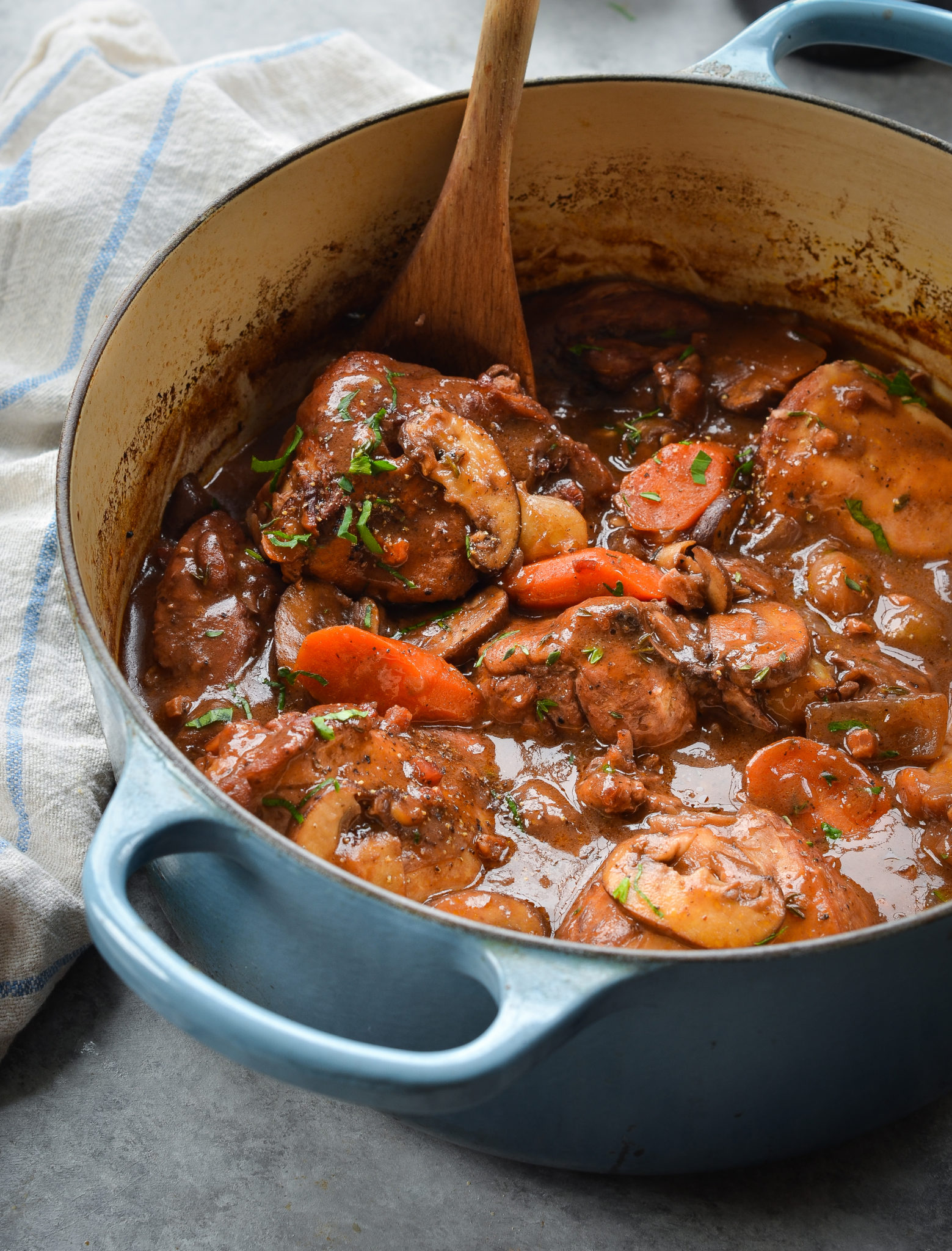French Coq Au Vin

French Coq au Vin: A Culinary Journey to the Heart of France
In the realm of French cuisine, few dishes evoke such a sense of rustic charm and warmth as Coq au Vin. This classic dish, literally translated as "rooster in wine," is a testament to the French tradition of using simple, everyday ingredients to create extraordinary culinary experiences. With its tender chicken, rich wine sauce, and medley of vegetables, Coq au Vin is a feast for both the eyes and the palate.
The Origins of a Culinary Masterpiece
The roots of Coq au Vin can be traced back to the rural regions of France, where resourceful housewives sought to transform humble ingredients into hearty and flavorful meals. The dish is believed to have originated in the Burgundy region, where the abundance of red wine and poultry provided the perfect foundation for this culinary masterpiece. Over time, Coq au Vin spread throughout France and became a staple in many households, each region adding its own unique twist to the recipe.
A Symphony of Flavors
The essence of Coq au Vin lies in its harmonious blend of flavors. The chicken, typically a plump and succulent rooster, is slowly braised in a robust red wine, infusing the meat with a deep, rich flavor. The addition of aromatic vegetables, such as onions, carrots, and celery, adds a layer of sweetness and complexity to the sauce. Herbs like thyme, bay leaves, and parsley contribute their own distinctive notes, creating a symphony of flavors that dance on the tongue.
The Perfect Pairing: Wine and Chicken
The choice of wine plays a crucial role in determining the character of Coq au Vin. Traditionally, a full-bodied red wine from the Burgundy region, such as Pinot Noir or Côtes du Rhône, is used. The wine’s tannins and acidity provide a sturdy backbone to the sauce, while its fruitiness adds a touch of sweetness and depth. The wine also tenderizes the chicken, resulting in meat that falls effortlessly off the bone.
A Culinary Journey through France
As Coq au Vin traveled from region to region, it underwent subtle transformations, reflecting the diverse culinary traditions of France. In Alsace, the dish is often prepared with Riesling wine, imparting a slightly sweeter flavor profile. In Provence, the addition of tomatoes and olives adds a touch of Mediterranean flair. And in the Basque region, Coq au Vin is sometimes made with piment d’Espelette, a local chili pepper, giving the dish a spicy kick.
The Art of Patience
Coq au Vin is a dish that rewards patience. The slow braising process allows the flavors to meld and develop, resulting in a rich and complex sauce. The chicken should be cooked until it is fall-off-the-bone tender, ensuring that every bite is a delight. The sauce should be simmered gently, allowing the wine and vegetables to release their full flavor.
Serving Coq au Vin with Style
When it comes to serving Coq au Vin, there are few rules to follow. The dish can be enjoyed on its own or accompanied by a simple side dish, such as mashed potatoes, egg noodles, or crusty bread. A sprinkling of fresh herbs, such as parsley or chives, adds a touch of color and freshness. A glass of the same wine used in the cooking process is the perfect complement to the meal, enhancing the overall dining experience.
Coq au Vin: A Culinary Legacy
Coq au Vin stands as a testament to the enduring power of French cuisine. Its simple yet elegant flavors, its versatility, and its ability to evoke a sense of nostalgia make it a beloved dish in households and restaurants alike. Whether enjoyed in a cozy bistro in Paris or prepared in the comfort of one’s own kitchen, Coq au Vin is a culinary journey that transports the senses to the heart of France.
Comments
Post a Comment